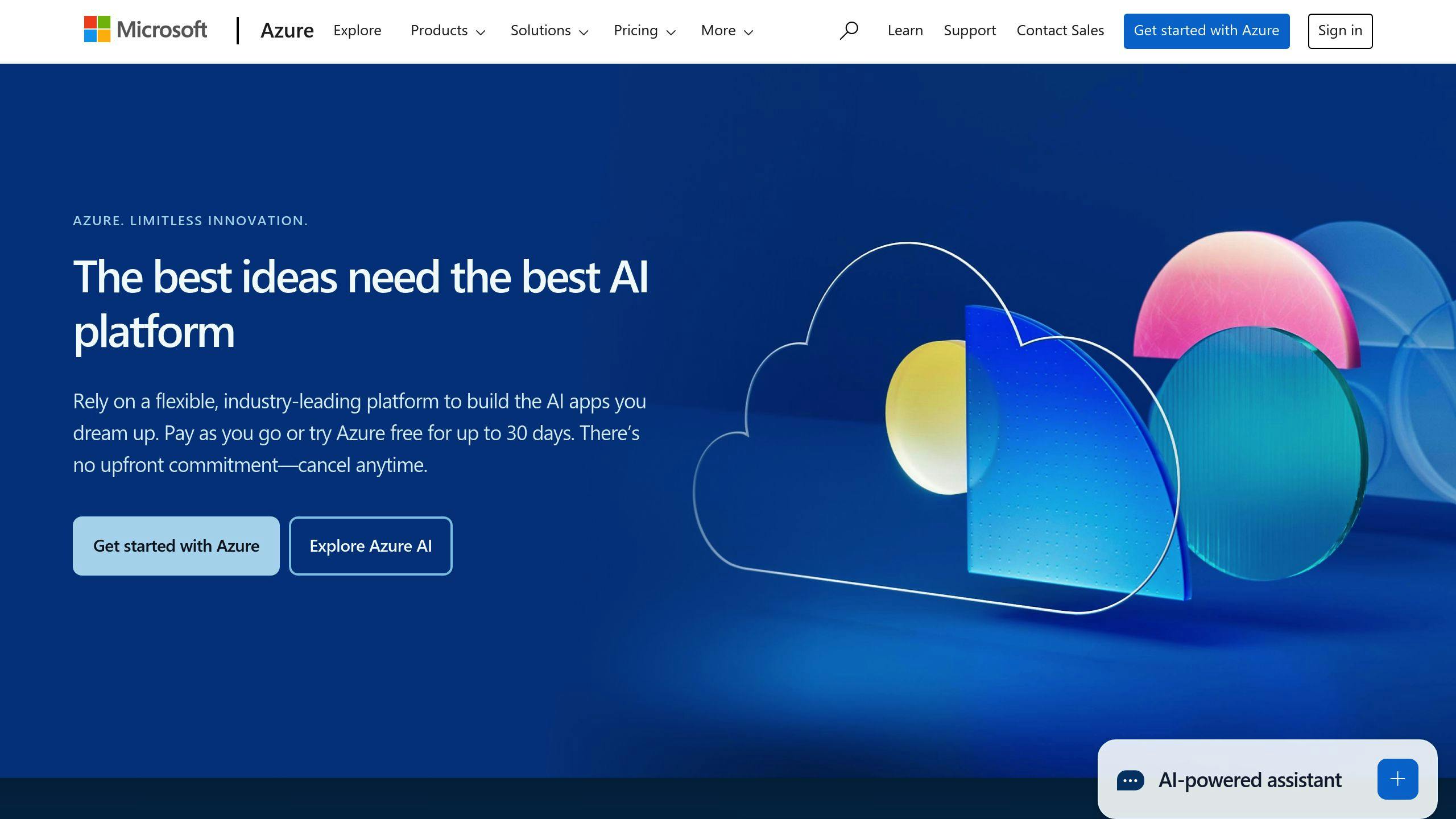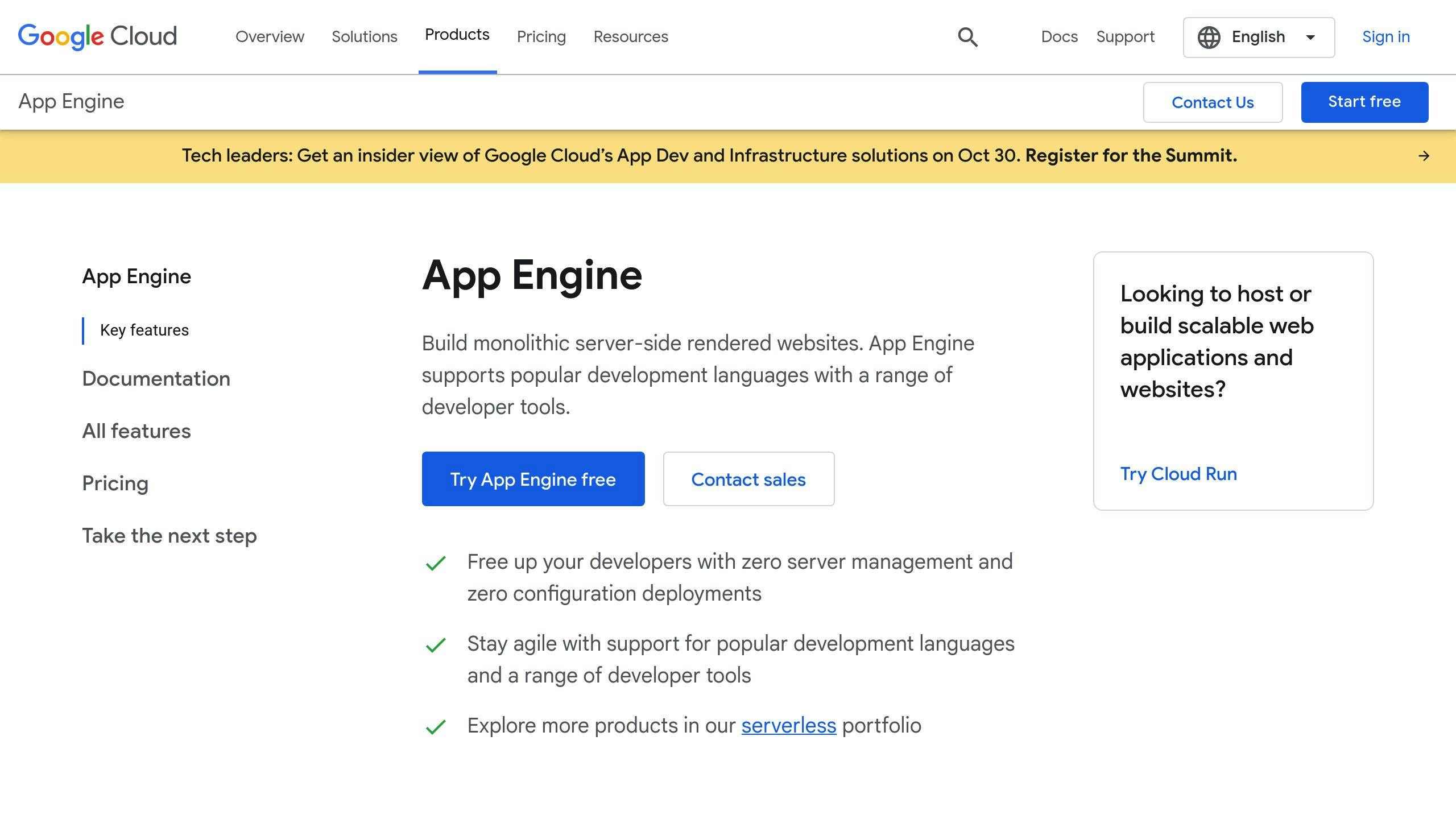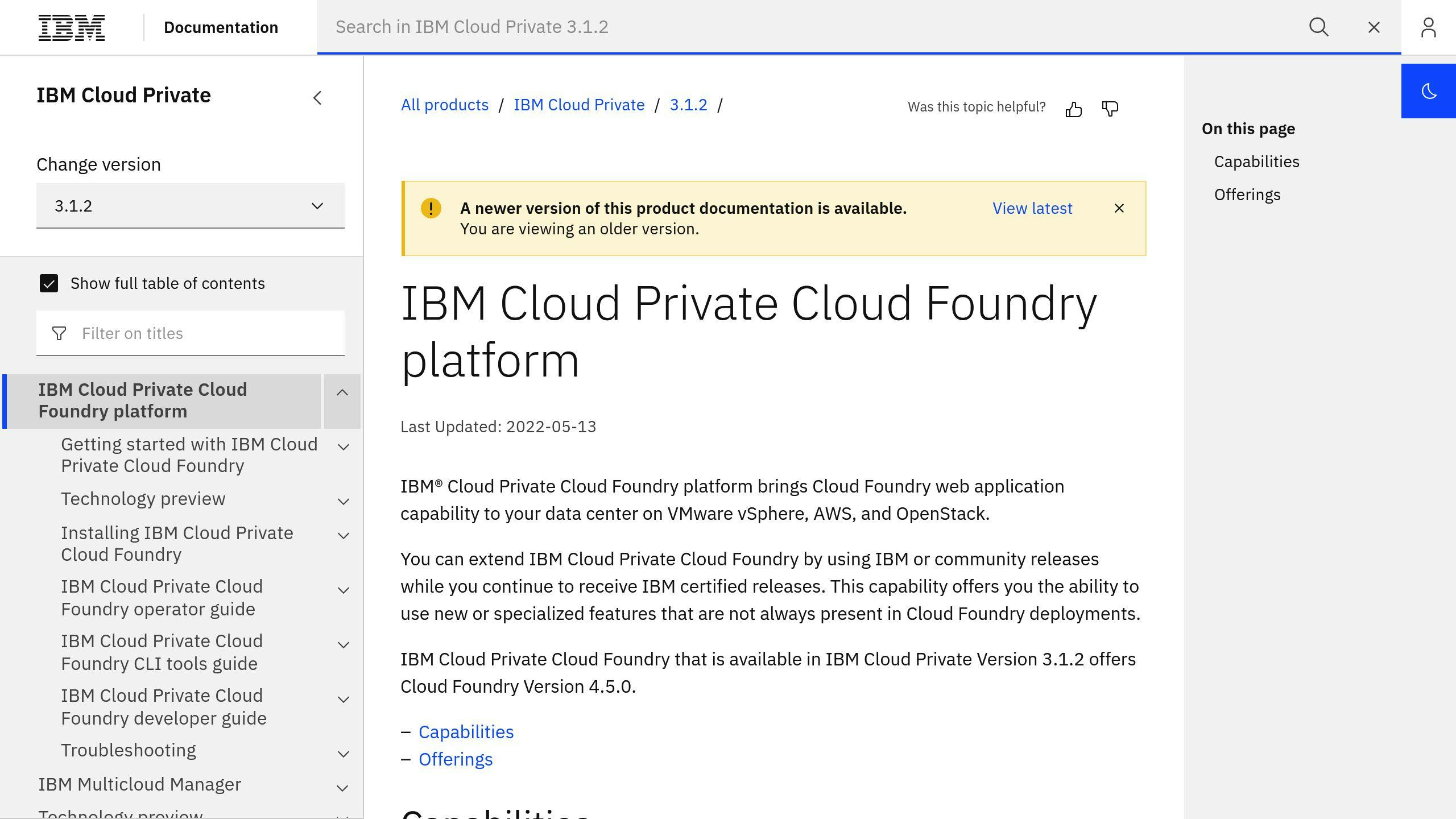PaaS (Platform as a Service) gives you a complete cloud workshop to build and run apps without managing servers. Let me break it down:
| What You Get | What You Don't Need to Worry About |
|---|---|
| Dev tools & software | Server maintenance |
| Storage & databases | Infrastructure setup |
| Operating systems | Hardware management |
| Security features | Manual scaling |
Key Facts:
- Market size: $176 billion in 2024
- Payment: Monthly or pay-as-you-go
- Growth rate: 28.8% yearly through 2025
Top Players & Their Focus:
| Provider | Best For | Starting Price |
|---|---|---|
| AWS | Wide service range | $69/month |
| Azure | Microsoft-based teams | $70/month |
| Google Cloud | AI & data analytics | $52/month |
| IBM | Enterprise apps | Custom pricing |
The Bottom Line: PaaS handles all the boring infrastructure stuff so you can focus on building better apps. You'll save money (30% average cost reduction) and launch faster (40% quicker deployments).
But watch out for:
- Vendor lock-in risks
- Internet dependency
- Potential surprise costs
Think of PaaS like renting a fully-equipped workshop instead of building your own. You just show up and start creating - they handle everything else.
Related video from YouTube
Main Parts of PaaS
Here's what you get with a PaaS system:
Development Tools
PaaS packs everything you need to build apps:
| Tool Type | What You Get |
|---|---|
| Languages | Java, Python, Ruby, and more |
| Dev Tools | Ready-to-use SDKs and APIs |
| Containers | Kubernetes for app packaging |
| Testing | Built-in debuggers and test tools |
Runtime Environment
Your apps need these to run:
- OS and web servers
- Middleware for connections
- Load balancers for traffic control
Database Management
PaaS makes data handling simple:
| Feature | What It Does |
|---|---|
| Hosting | Stores your app data |
| Backups | Saves data automatically |
| Scaling | Adds storage when needed |
| Migration | Moves data between systems |
Security
Built-in protection comes standard:
| Feature | Job |
|---|---|
| Auth Systems | Controls access |
| Encryption | Protects your data |
| Firewalls | Stops bad traffic |
| User Controls | Sets who does what |
Look at platforms like Apache Stratos or Cloud Foundry - they handle ALL of this stuff. Same with Red Hat OpenShift and Heroku. You just code; they manage the rest.
Take Google App Engine. You get:
- Ready-made environments
- Dev tools
- Auto-scaling
- Multi-language support
And here's the best part: It all works together, right away. No setup headaches, no compatibility issues. Just start building.
What PaaS Can Do
PaaS makes your life easier by handling the boring stuff. Let me show you how.
Growing with Your Needs
PaaS adds or removes resources automatically based on what your app needs. No manual work needed.
| Scaling Type | How It Works | When It's Used |
|---|---|---|
| CPU-based | Kicks in when CPU hits limits | Heavy processing |
| Traffic-based | Adjusts to user count | Rush hours |
| Predictive | Uses history to scale ahead | Regular patterns |
Think of AWS Elastic Beanstalk. It's like having a smart assistant who watches your CPU and adds more power before things slow down.
Auto Updates and Deployment
Want to push new code? PaaS makes it dead simple:
| Feature | What It Does |
|---|---|
| Auto Updates | Keeps everything fresh |
| One-Click Deploy | Gets code live FAST |
| Version Control | Tracks every change |
| Rollback Options | Fixes mistakes quick |
Works on Different Systems
Pick your favorite language - PaaS probably supports it:
| Platform | Languages Supported |
|---|---|
| AWS Elastic Beanstalk | Java, .NET, PHP, Node.js, Python, Ruby, Go |
| Engine Yard | Ruby on Rails, Node.js, Python, PHP, Java |
| Google App Engine | Python, Java, PHP, Node.js |
Tracking and Reports
PaaS watches your apps like a hawk:
| Metric Type | What It Shows |
|---|---|
| Response Time | App speed |
| Uptime | Time running |
| CPU Use | Processing power |
| Memory | Storage used |
| Data I/O | Data movement |
| MTTR | Fix speed |
Here's the cool part: PaaS spots issues BEFORE users do. If CPU hits 80%? It'll tell you AND fix it.
Here's a fact that'll make your boss happy: Companies often waste 32% of their cloud money without good monitoring. PaaS fixes that.
Different Types of PaaS
Here's a breakdown of PaaS options and when each makes sense.
Shared PaaS
Most companies pick shared PaaS platforms like AWS Elastic Beanstalk or Microsoft Azure. Here's why:
| Feature | Benefit |
|---|---|
| Lower costs | You split the bill with other users |
| Quick setup | Jump right in - everything's ready |
| Auto updates | No maintenance headaches |
| Built-in tools | Get tons of services out of the box |
Private PaaS
Big players like JPMorgan Chase and McKesson run PaaS on their own servers. Here's what they get:
| Feature | Benefit |
|---|---|
| Full control | You call ALL the shots |
| Better security | Keep your data close |
| Custom setup | Build exactly what you need |
| No vendor lock | Switch providers when you want |
Mixed PaaS
Want the best of both worlds? Mixed PaaS lets you split tasks between public and private:
| Public Tasks | Private Tasks |
|---|---|
| Web hosting | Customer data |
| Email systems | Payment info |
| Testing | Health records |
| Development | Financial data |
Special PaaS Types
Some PaaS options have specific jobs:
| Type | Purpose | Examples |
|---|---|---|
| SaaS-tied | Builds on top of other platforms | Salesforce App Cloud, Workday Cloud |
| OS-tied | Works with specific systems | AWS Elastic Beanstalk, Azure |
| Open-cloud | Runs anywhere | Engine Yard, Cloud Foundry |
Pick your PaaS based on:
- How much security you need
- What you can spend
- Your team's tech skills
- Where you want to go next
sbb-itb-9890dba
Top PaaS Companies
Here's what makes each major PaaS provider different.
Microsoft Azure App Service

Azure dominates the enterprise space. Here's what you get:
| Feature | Details |
|---|---|
| Market Position | Used by 95% of Fortune 500 companies |
| Global Reach | 126 availability zones across 64 regions |
| Language Support | .NET, Java, Node.js, Python, PHP |
| Built-in Tools | Auto-scaling, DevOps integration, custom domains |
Google App Engine

Google's platform packs a punch:
| Feature | Details |
|---|---|
| Market Growth | 54% annual growth rate |
| Coverage | 121 zones in 40 regions |
| Key Customers | Spotify, Toyota, Unilever |
| Auto Features | Traffic-based scaling, health checks |
AWS Elastic Beanstalk

AWS leads the pack:
| Feature | Details |
|---|---|
| Market Share | 32% of cloud market |
| Infrastructure | 105 availability zones in 33 regions |
| Major Users | Netflix, Airbnb, Coca-Cola |
| Core Services | Load balancing, auto-scaling, monitoring |
IBM Cloud Foundry

IBM focuses on these core areas:
| Feature | Details |
|---|---|
| Focus | Multi-cloud deployment |
| Main Options | OpenShift, Cloud Pak |
| Use Cases | Cloud-native apps, legacy modernization |
| Key Tools | Built-in scaling, automated health checks |
Each platform shines in different ways:
| Provider | Best For |
|---|---|
| Azure | Microsoft-centric companies |
| Data analytics, ML workloads | |
| AWS | Wide service selection |
| IBM | Enterprise modernization |
How to choose? Look at:
- Your existing tech stack
- Areas where your team needs support
- Your budget (AWS: $69/month, Azure: $70/month, Google: $52/month)
- Your preferred programming languages
Pros and Cons of PaaS
Let's look at what PaaS does (and doesn't do) well.
Money and Time Savings
PaaS helps you spend less money. Here's how:
| Cost Area | What You Save |
|---|---|
| Infrastructure | Skip server and storage costs |
| Staff | Run with smaller IT teams |
| Updates | No maintenance headaches |
| Scaling | Pay for what you use |
Need proof? Tech Innovators Inc. cut their costs by 30% after switching to PaaS. Plus, they got their products to market 40% faster.
Tech Benefits
Here's what you get with PaaS:
| What You Get | Why It Matters |
|---|---|
| Fast Deployment | Launch apps in less time |
| Ready Tools | Start coding right away |
| Smart Scaling | System grows with you |
| Security | Provider handles protection |
| Auto Updates | System stays current |
| Work Anywhere | Use any device |
Common Problems
But PaaS isn't perfect. Here's what to watch for:
| Problem | What It Means | What To Do |
|---|---|---|
| Vendor Lock-in | Switching is hard | Write portable code |
| Surprise Costs | Bills can jump | Set spending caps |
| Internet Needs | Must stay connected | Get backup internet |
| Data Safety | Info lives off-site | Check security specs |
| System Limits | Some apps won't work | Test first |
"PaaS works well for small businesses and startup companies for two very basic reasons. First, it's cost effective, allowing smaller organizations access to state-of-the-art resources without the big price tag." - CompTIA
Before you jump in, check these things:
- How often systems stay up
- Security proof
- How fast you'll get help
- What you'll pay
- How to leave if needed
How to Start Using PaaS
Here's what you need to know about getting started with Platform as a Service:
Choosing a PaaS Provider
The PaaS market jumped from $46.3 million in 2020 to $71.5 million in 2022 (Gartner). But bigger doesn't always mean better.
Here's what matters when picking a provider:
| What to Check | Why It Matters |
|---|---|
| Language Support | Makes sure you can code in your preferred languages |
| Security Features | Protects your data and meets compliance needs |
| Speed & Uptime | Keeps your apps running fast and reliable |
| Pricing Structure | Helps you avoid surprise costs |
| Help & Support | Gets you unstuck when issues pop up |
| Exit Options | Lets you move your data if needed |
Setup Steps
Setting up PaaS doesn't have to be complicated. Here's your game plan:
| Do This | Like This |
|---|---|
| Plan First | List what your app needs |
| Start Small | Build a test project |
| Move Data | Transfer everything securely |
| Lock It Down | Set up who can access what |
| Train Users | Show your team the ropes |
"PaaS providers must ensure that data is safe and sound while hosted on their platform, with top-notch security tools that protect data 24/7, 365." - Liam Ford, PaaS Management Expert
Keeping PaaS Safe and Working
Think of security tools as your PaaS bodyguards:
| Tool | Job |
|---|---|
| Key Vault | Keeps secrets secret |
| Access Control | Manages who gets in |
| Monitoring | Spots problems early |
| Backup | Saves your stuff |
Quick Security Checklist:
- Keep login details OUT of your code
- Use strong ID checks
- Watch how your apps run
- Back up regularly
- Test everything
Take Azure Key Vault - it uses special hardware to lock down your secrets. That's the kind of protection you want.
What's Next for PaaS
The PaaS market keeps growing fast. Public cloud spending is jumping 20.4% each year, heading to $678.8 billion by 2024 (Gartner).
Here's what's happening in PaaS right now:
| Change | What It Means | When |
|---|---|---|
| AI Tools | AWS Bedrock and Azure OpenAI leading dev tools | 2024 |
| Multi-Cloud Push | 51% of IT money going to public cloud | By 2025 |
| Edge Computing | 5G and IoT apps moving to network edges | 2024-2025 |
| Spending Control | New tools to fix 30% cloud budget waste | Now |
AWS Shows Where We're Going
AWS just dropped some big updates:
- Amazon Q helps with design
- Trainium2 chips speed up AI
- Party Rock lets anyone build AI apps
The Money Side
Let's look at the numbers:
- Cloud market hitting $1,266.4 billion by 2028
- Growing at 15.1% yearly
- PaaS alone gets $109.6 billion
"Cloud stays strong when other tech slows down. Companies want to swap big upfront costs for smaller monthly bills." - Micron Technology, Q4 2022 Earnings Call
Big Changes Coming Soon
| What's Changing | What You'll See |
|---|---|
| Security | AWS GuardRail protecting AI |
| Rules | Local data laws getting stricter |
| Power Use | Better hardware using less energy |
| Cost Tools | Smarter ways to watch spending |
Almost half of all work now happens in public clouds. For the second year, companies care more about costs than security. Cloud providers are building better tools to help track and cut spending.
FAQs
What is PaaS in simple terms?
PaaS is like getting a fully-equipped workshop in the cloud. You get all the tools and space to build apps without buying or managing any equipment yourself.
Here's what comes with PaaS:
| Component | What It Does |
|---|---|
| Hardware | Servers and storage systems |
| Software | Operating systems and development tools |
| Network | Internet connectivity and security |
| Middleware | Database management and app hosting |
What is PaaS and how does it work?
PaaS puts everything you need on someone else's servers. Just open your browser, and you're ready to work.
Here's who handles what:
| Provider Handles | You Handle |
|---|---|
| Servers | Your apps |
| Networks | Your data |
| Storage | User access |
| Operating Systems | App settings |
| Development Tools | Code |
Let's talk numbers:
The PaaS market hits $176 billion in 2024. You pay either as you go or monthly - just like a subscription. AWS Elastic Beanstalk, Windows Azure, and Google App Engine lead the pack.
Think of it this way: Instead of building your own workshop, you're working in someone else's. They take care of the building, tools, and maintenance. You just show up and build your stuff.


